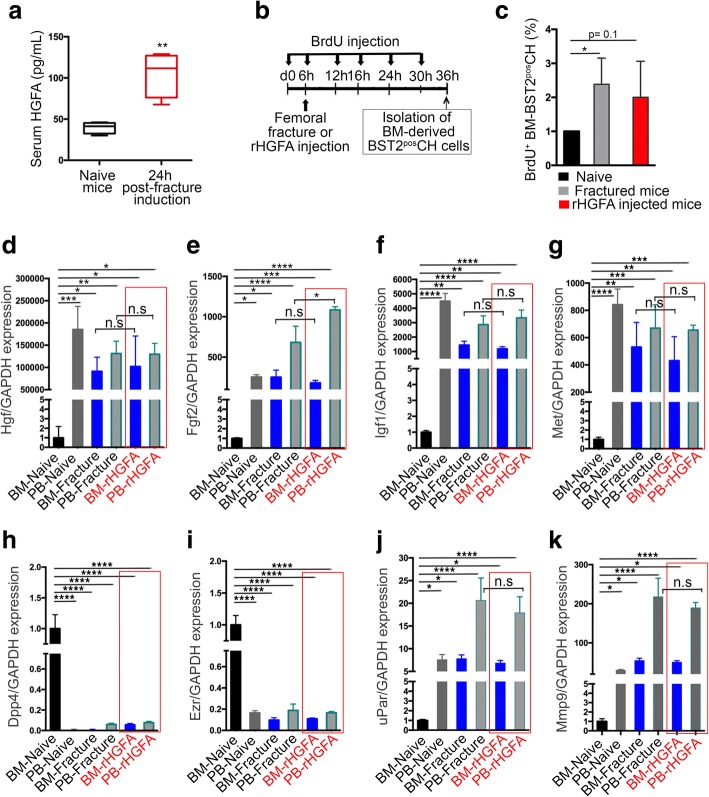Fig. 5.
HGFA is sufficient to induce the GALERT transition and the functional molecular changes of BST2pos CH cells. a Serum samples were prepared from non-injured (naive) or 24 h injured (fractured) mice, and HGFA levels were measured by ELISA. Bar graphs represent mean ± SD (t value = 4.62, df = 6). ** p = 0.0036. The serum from four mice/group have been analyzed. b Schematic depicting the timelines of BM-derived BST2pos CH cell isolation from fractured or recombinant HGFA (rHGFA)-injected mice contemporary receiving consecutive BrdU injections. (c) BM-derived BST2pos CH cells derived from fractured (gray bar) or rHGFA-injected (red bar) mice have higher propensity to cycle in vivo than cells extracted from naive control mice (black bar). Three mice/experimental group have been used and four independent replicates have been performed. Bar graphs represent mean ± SD (t = 3.11, df = 4) *p = 0.0357. d–k The expression of the selected motility-associated genes Hgf (d), Fgf2 (e), Igf1 (f), Met (g), Dpp4 (h), Ezr (i), uPar (j), and Mmp9 (k) was confirmed by quantitative PCR analysis, comparing the gene expression profiles of BST2pos CH cells isolated from PB- and BM-Naive (14 mice), PB- and BM-Fracture (12 mice), and PB- and BM-rHGFA mice (six mice). Bar graphs represent mean ± SD, *p < 0.0306, **p < 0.0096, ****p < 0.0001

